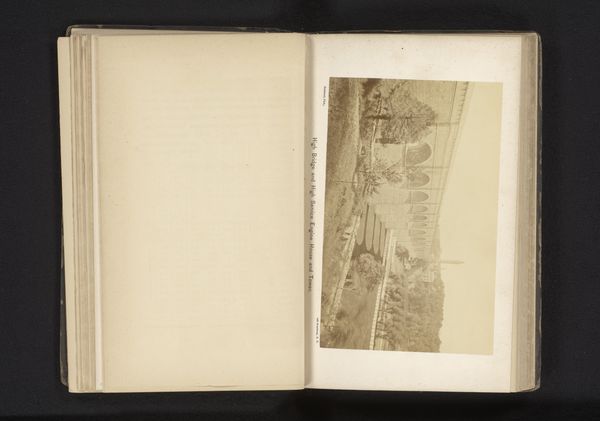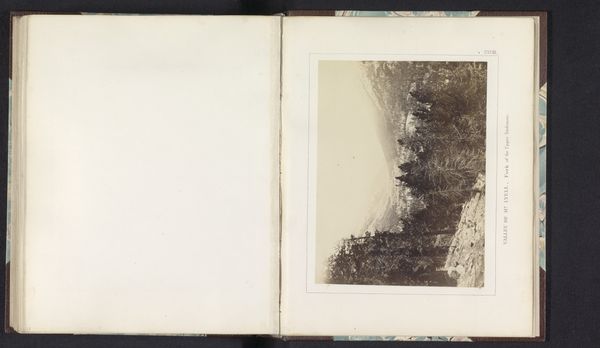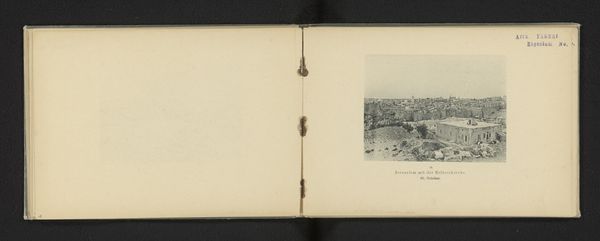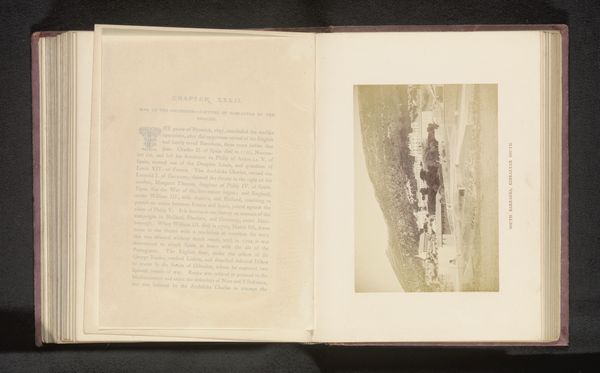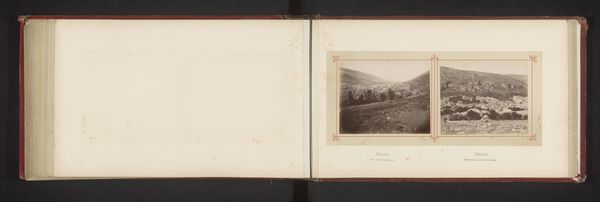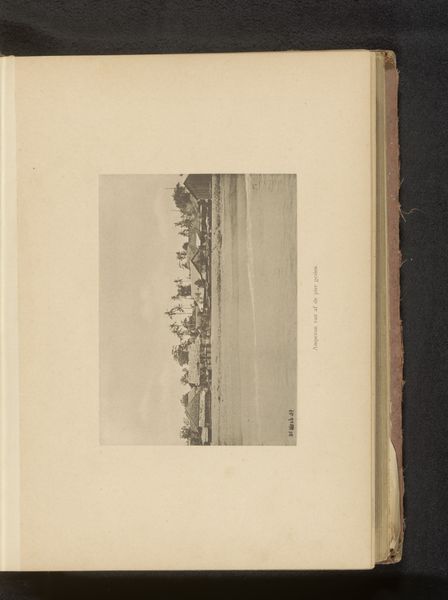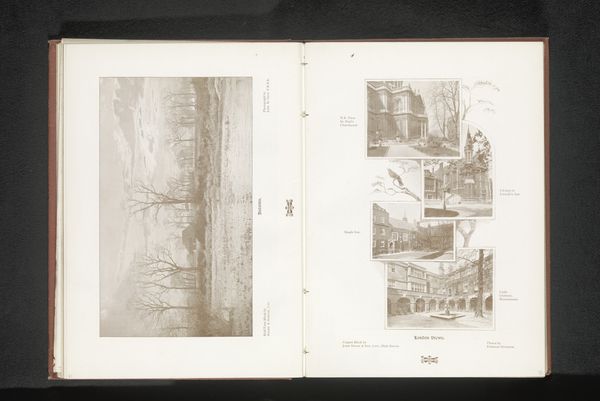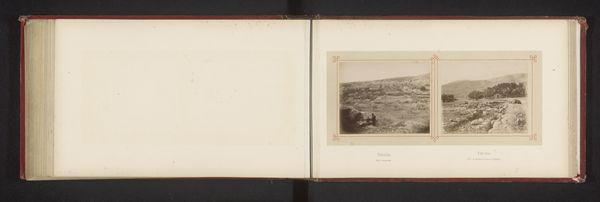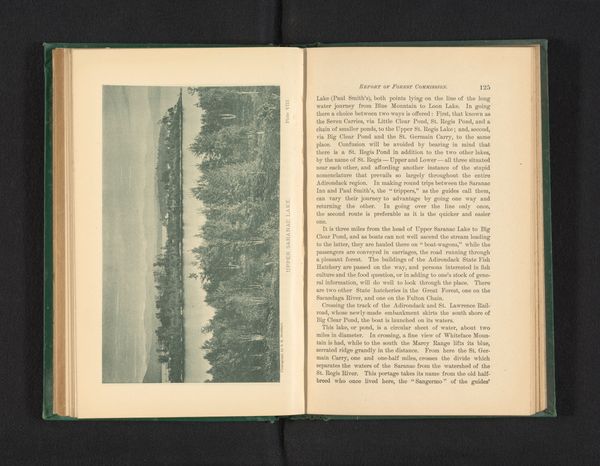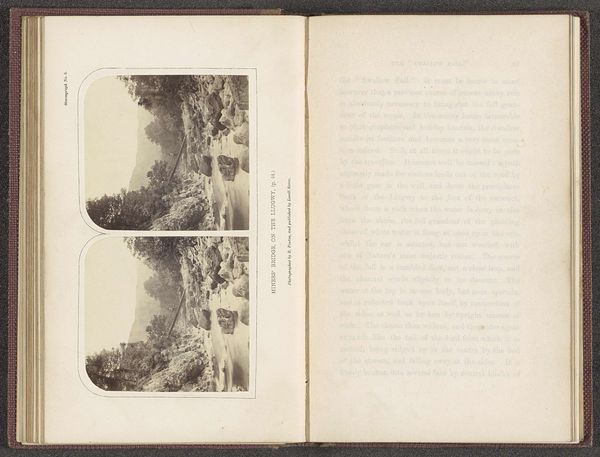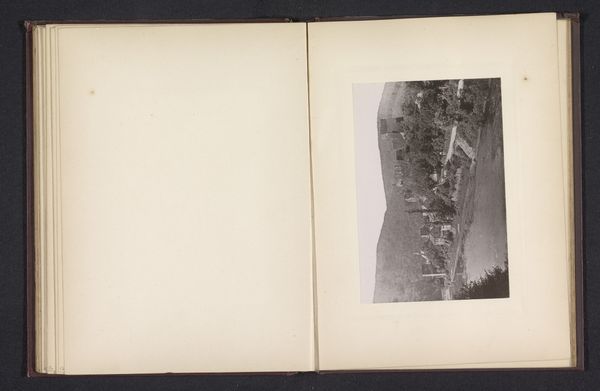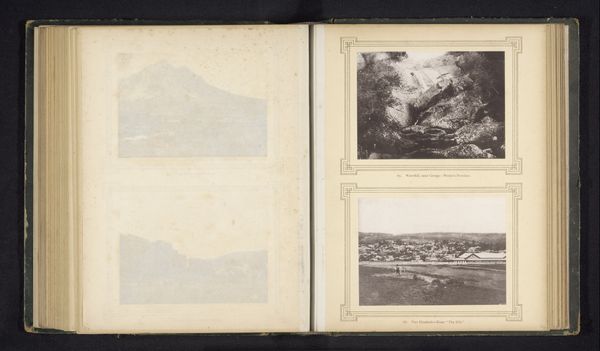
print, photography
# print
#
landscape
#
photography
#
ancient-mediterranean
Dimensions: height 92 mm, width 151 mm
Copyright: Rijks Museum: Open Domain
Editor: So, this is a photograph titled "The Pyramid of Cholula," taken before 1880. It’s interesting seeing an ancient site rendered in this early photographic print medium, giving it a faded, almost dreamlike quality. What stands out to you when you look at this image? Curator: The dreamlike quality you mention resonates. This isn’t merely a record, it’s an interpretation filtered through the lens, literally and figuratively. What catches my eye is the symbiosis: how nature seems to reclaim the pyramid, blurring the lines between human creation and the enduring power of the landscape. Note the church atop the pyramid – a powerful superimposition of cultures and belief systems. Do you think the photographer was consciously commenting on the layered history here? Editor: That’s a really interesting point! I hadn’t considered the juxtaposition of the ancient pyramid and the later church in that way. Maybe they were highlighting the transition and clash of belief systems? Curator: Precisely. The pyramid itself, once a vibrant center, now appears as a silent witness overgrown by vegetation. Consider its shape, echoed perhaps in the rolling hills behind it – nature mirroring and absorbing the human endeavor. How does that visual echo strike you? Editor: It makes it seem less imposing and more integrated with the land, as if it has become part of the natural landscape rather than a separate structure. It almost normalizes this very unnatural structure. Curator: A potent visual metaphor, isn’t it? And it provokes consideration for what the enduring symbols are and become. What remains, what transforms, and what power is lost or gained. Food for thought, indeed. Editor: I'll never look at historical landscapes the same way now. I was so focused on the technique of photography and not the layering of meaning! Curator: Wonderful. And understanding those layers—that’s the power of art history.
Comments
No comments
Be the first to comment and join the conversation on the ultimate creative platform.
